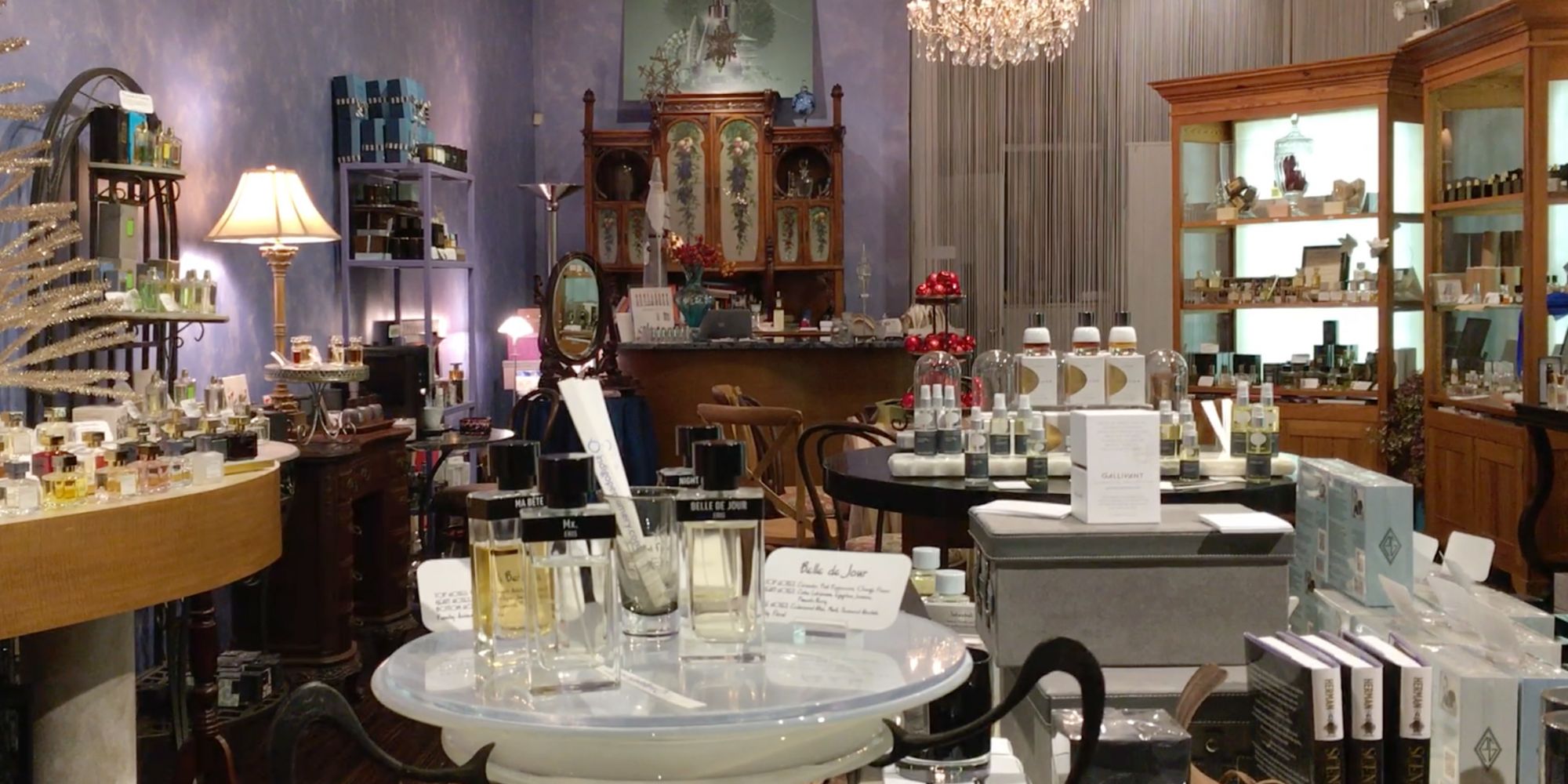
Indigo Perfumery Flourishes As Midwesterners Discover Niche Fragrances
Niche fragrances aren’t merely a coastal phenomenon. At Indigo Perfumery in Cleveland, owner Ann Bouterse cultivates a devoted following for a varied assortment of artisanal brands by guiding people to the right perfume picks for them without being pushy. The emphasis on customer service is crucial to Bouterse because she argues in-person assistance keeps brick-and-mortar retail relevant as e-commerce surges. “We try to ascertain at the beginning how much help you need. Some people want to be totally alone, and some people want to be accompanied at every step,” she says. “If they need help, they ask, ‘What do you suggest for spicy or fresh and clean?’ It’s a matter of elimination. I can suggest things for them and make it go quicker because I know the perfumes very well.” Beauty Independent conversed with Bouterse about other topics she knows well, including brand discoveries, scent events, sampling, difficulties defining fragrances, marketing initiatives and the future of the niche segment.
What were you doing before Indigo Perfumery?
I’ve loved perfume for as long as I can remember, but I put it in the back of my mind that someday I was going to do something with it. I graduated from St. Louis University and was a registered nurse for about 10 years. Then, it was time to move on. I had my children and was home for a couple of years. I started working for a floral decorator because I didn’t want to go back to nursing. I eventually married the floral decorator. We were both married to other people previously. He’s from Holland and, when we would visit his family in the Netherlands, we would visit perfumeries. They weren’t like going to department stores in America, where you brace yourself for people spraying you. After 20 years of doing big events and weddings, I thought, “Why don’t I open a small perfumery?” I didn’t want it to be like the department store experience. I tried my hand at it four-and-a-half years ago. It’s not exactly what I thought it was going to be like at all. It’s about constantly marketing and figuring out how to get people in.
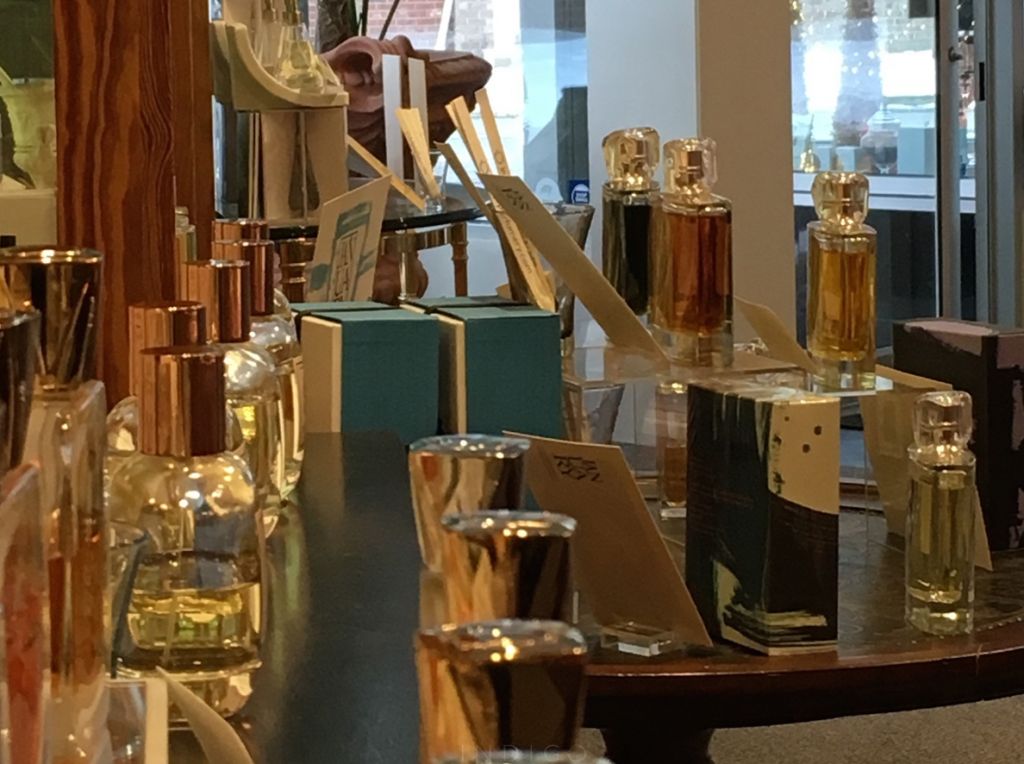
What’s the Indigo Perfumery concept?
It brings the appreciation of perfume and our sense of smell to the public that doesn’t think about it much. I am a firm believer in the sense of smell and the importance it has. When people come in, I explain how the sense of smell works because most people have no idea. I also want them to be able to choose a perfume that they love because I believe you need that, too. My philosophy isn’t to sell, sell, sell. I believe it’s an experience when you come here. Our average store visit is 20 to 30 minutes, and sometimes people are here for hours. I work with people all day long and try to understand what they mean by their descriptions of fragrances. Everyone describes fragrances so differently. Someone who says they hate musk might walk out with a musk fragrance because they didn’t really know what musk smells like.
How did you land on the shop’s location?
Indigo is west of downtown about 10 minutes. It’s in an inner-ring suburb called Lakewood. Lakewood is a vibrant city with many nationalities and tons of restaurants. I knew I didn’t want to be in a mall. We are in an old building that dates back to 1905. The landlord takes very good care of it. We are in a corner store, which is great because I have windows that are 12-feet wide and 12-feet tall. The windows let people know who we are.
What’s the Indigo Perfumery store like?
It’s 1,000 square feet, big by most perfume-store standards. In Cleveland, we have the luxury of space that doesn’t cost much. The building has the original 14-foot ceilings. It’s a long, narrow space. You walk in, and there are four cabinets on the right-hand side, smaller tables with perfume and a little fireplace area. We have a counter at the back. Everything is eclectic. It’s the opposite of a white store with white shelves. There is nothing white in here. It’s very colorful. Each perfume has its own area. I try to give the displays character. There’s a little rosewood desk that a woman might sit at to get ready. I have a table with funky black-and-white marble that holds the coffee machine. Everything can be moved around except for the big front windows. The big windows are great, but you can’t put perfumes in them because they get very hot and, with the alcohol in perfumes, we don’t want explosions. Also, the challenge is that the windows are so large and the bottles are so small. I have to figure out how to tell a story. I have a palm tree in the window that almost reaches the ceiling and a big container of patchouli. I frequently have fresh flowers.
How did you assemble Indigo’s assortment?
I did research for a good nine to 10 months before we opened. We opened with 20 lines, and I had to take a some out after a few months because they didn’t do as well as they should have. At the beginning, you just try to assemble a nice assortment. I wanted to have a couple of natural lines because people are always asking for those. I have Ambre Blends, Hiram Green and Providence Perfume. Everyone equates synthetic chemicals with bad. Little do they know that natural compounds have more allergens in them. Within a year of having the store, I started receiving samples from people hoping to have their lines here, and I went from there. There are some big lines I would like to have, but I draw the line at not having lines represented in other stores in Ohio. I think I only have one or two lines that are elsewhere in Ohio.
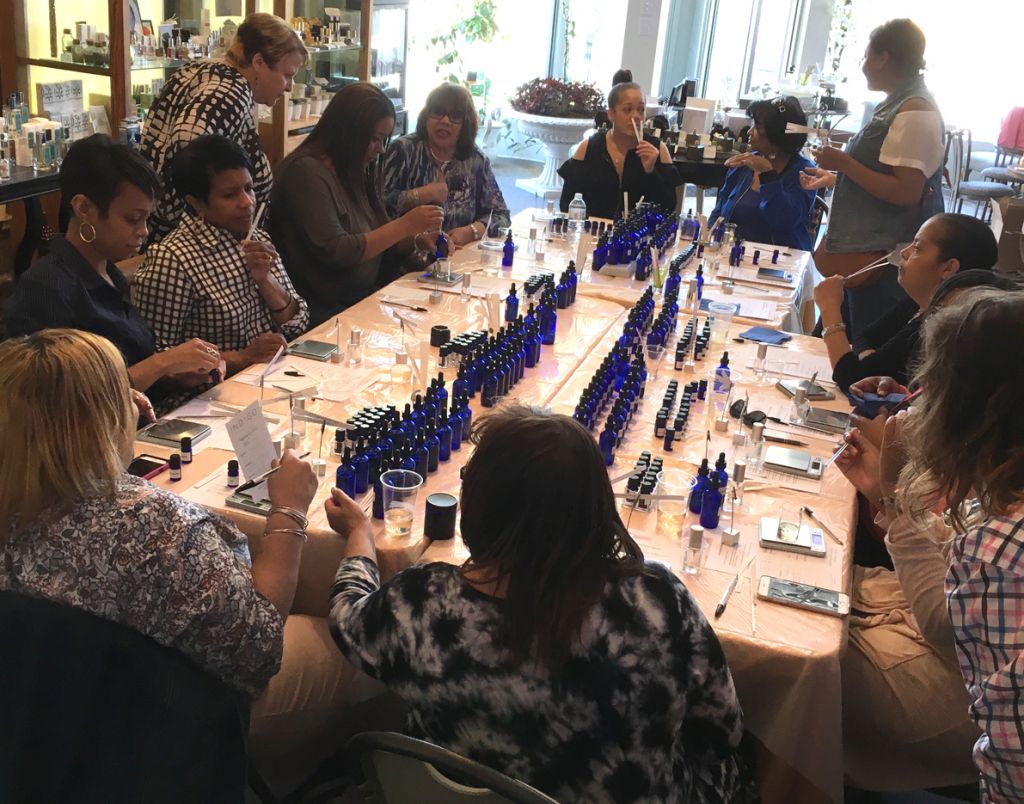
How many brands are stocked by Indigo Perfumery now?
At last count, it was around 45. There is no star line that sells more than another, which is surprising to me as well as other people. Some of the recognizable ones are Maison Francis Kurkdjian and Ormonde Jayne. Everyone loves Arquiste and Jul et Mad. Beaufort London is a very unusual line. Eris Parfums is a very small line. D.S. & Durga and Imaginary Authors always do well, and Masque Milano is wonderful.
How do you discover new lines today?
I’m constantly reading online and doing research. You can’t ever think you know it all. You have to keep up. Somebody might mention a line that I haven’t heard of, and I contact the people behind it. Sometimes I want to place an anonymous order so I can smell it. If I don’t like it, then I don’t have to explain.
How do you prefer brands pursue Indigo Perfumery?
Call, send me an email or send me samples. It’s hard to know if a line fits until you smell it.
Are there lines in particular that you find fit the store?
Classic fragrances with a modern touch to them. I want them to not be experiments from someone who’s just doing it for the first time. I want them to be unisex also. That doesn’t mean every perfume has to be unisex, but I don’t want them to be just all female or all male. I’m always surprised by what men like and what women like. Oftentimes, men choose something that’s way more feminine than what I might imagine for them.
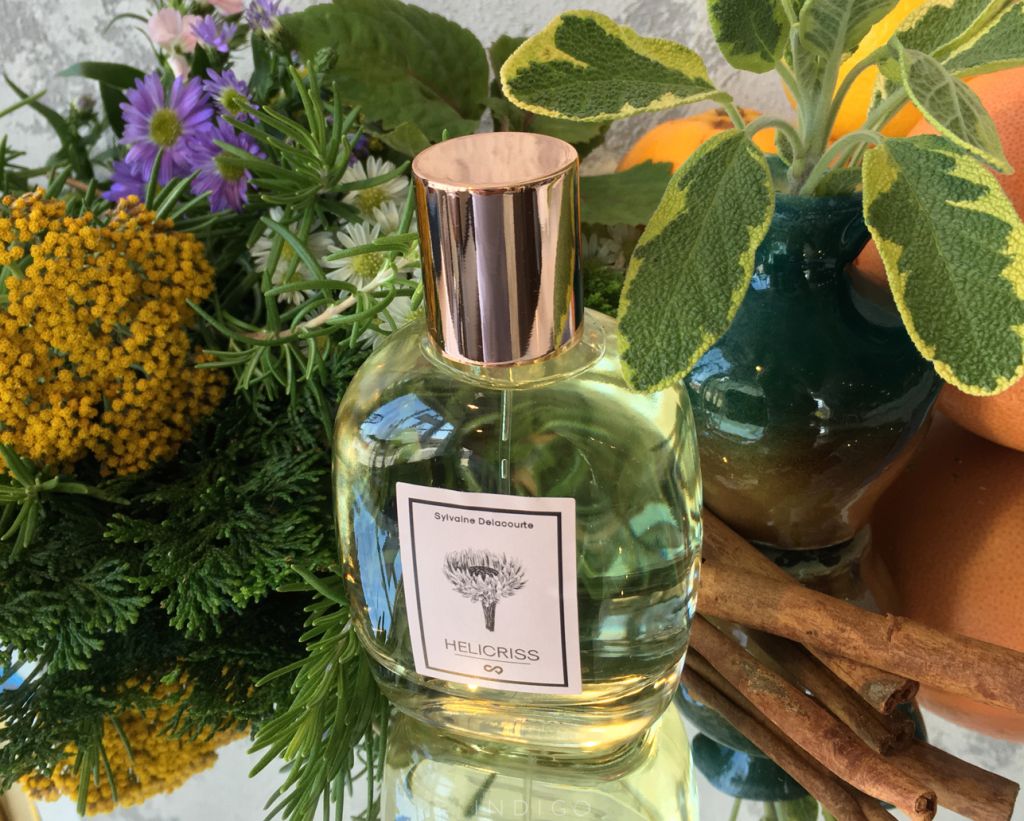
What quantities do you bring in when you launch a line?
Quite honestly, as little as possible. Some people have minimums, and they can be anywhere from six to ten [units]. I want to see how a line is going to perform. It’s tough when you are working with vendors from Europe because they want to ship a lot. Shipping costs can be ridiculous, hundreds of dollars to bring over perfumes from the U.K. or France. I’m constantly talking to FedEx, UPS or customs because they have questions about what’s coming in. You need to know exactly what’s there or they won’t release it. Sometimes packages arrive at my door from Europe in three days, and sometimes it can take three months. It just depends on what customs decides.
Who are Indigo Perfumery customers?
They’re between 25 and 65. At least 40% are male, and they’re not shopping for their girlfriends or wives. They’re shopping for themselves. It always amazes me how many men have perfume collections. There are customers who have never worn perfume before or who say perfume gives them a headache. There are also people who come in clutching their favorite perfume and want to know if we can recreate it. I tell them, “We can never recreate it,” and I teach them how to discover and smell fragrances. I have to work with them and ask, “What do you mean by spicy or fresh and clean?” A lot of people come in for fresh and clean, but the definition of fresh and clean is different for everyone.
You hold regular workshops at Indigo Perfumery. Why?
It’s a way to bring people into the store and teach them about a subject like spicy perfumes or animalic scents. It’s fun to have people come in and not have the pressure of having to buy. Most of the time, they’ll end up wanting to look around anyway.
What’s the Scent Quarter Perfume Lab?
It’s an area where you can create your own perfume. It takes a couple of hours, and everybody leaves with a smile on their face. They receive a 30-ml. bottle, and it’s $75.
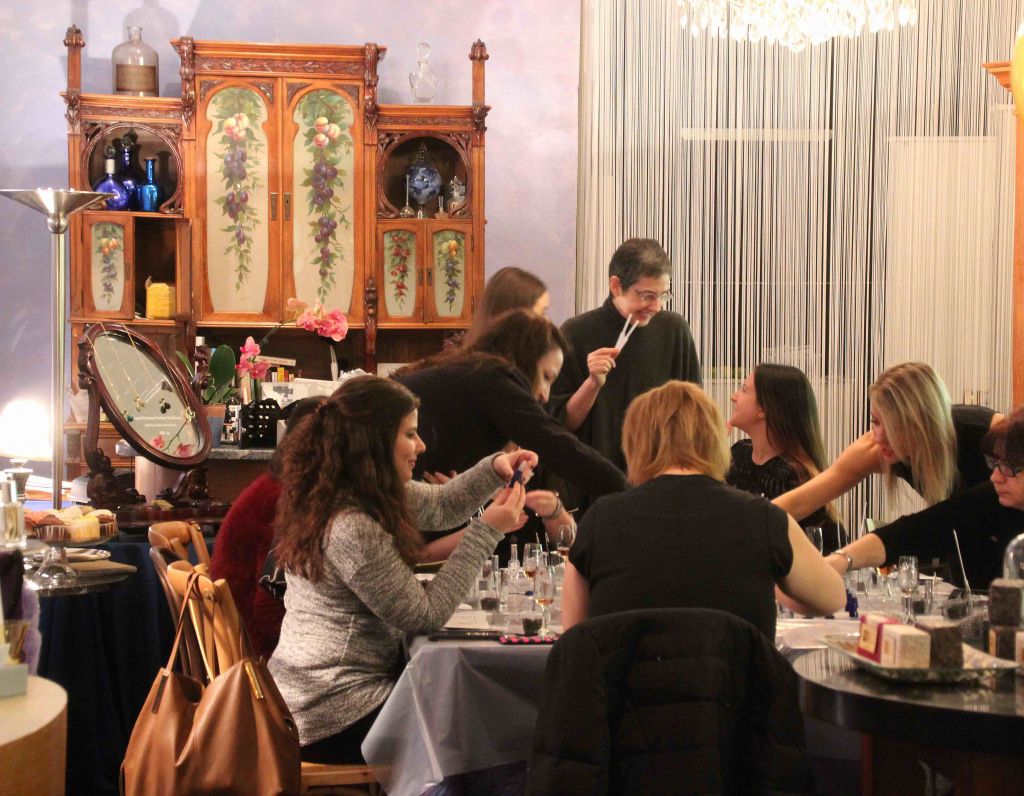
What percentage of Indigo Perfumery’s business is online sales?
Close to 50%. If somebody comes to the store, they will rarely order online. Half of them don’t even realize I have a website.
What margins do you take?
They are typically 50%.
What’s your approach to sampling?
I do an unusual thing for stores and give out 1-ml. spray samples. Very rarely does someone leave without sample. When someone walks into the store, they’re entitled to two free samples and, after that, samples are $4. If someone spends $100 online, I give them two free samples. It’s what you call a loss leader. I wouldn’t feel good about it if I didn’t do it. In the past, I’ve had too many perfumes I used as bathroom sprays because, while I liked the perfume, I didn’t like it on me. I want our customers to really love the perfume they choose.
What’s your opinion on the Amazon effect?
Most perfumers don’t want their perfumes to be sold at any other price than the price they want to sell them for. You are limited in that way. It can be very challenging for people with small niche perfume stores. You might want to discount to make sales, but you can’t because perfumers will pull the perfumes, and you have to respect their requests.

You mentioned marketing Indigo Perfumery. What are you doing for marketing at the moment?
Besides having events, I do a little bit of print marketing. I’m holding off digital for a while because it wasn’t really worth the cost. You are constantly reevaluating marketing efforts. Maybe in three or four months, I will go back to digital. Obviously, social media is important. It’s interesting to see what translates into sales. It’s not always what you think. While Instagram is fun and gets good reactions, I make more sales from people referred through Facebook, which has really surprised me.
What do you envision will happen with the niche fragrance segment in the future?
It will become more well-known. What I hope is that it doesn’t become overrun with too many fragrances. That would almost cheapen it. I think it needs to remain special and a little bit elusive, so there’s still mystery.
What have you learned about what it takes to make it as a retailer in the current environment?
Take the time and money you think you’re going to be spending, and double it. Most evenings, you will be working. If you don’t have a passion for it, it will be really hard. I’m also always amazed by people. I remember, the first month I was in business, I thought I was going to be able to peg everyone who walked in the door. Boy, I was wrong. I’m shocked all the time by what they like.
What’s something you would like to change about the perfume industry?
I wish somehow we could change people wanting to know what’s in a perfume before they try it. Perfumers give us the notes and probably 50% of the fragrances in here have the same notes. I have cards for each perfume that says the notes and what fragrance family a fragrance is in, but people can’t go by that. They get the wrong impression about what a perfume is like because they interpret perfumes so differently. In the beginning, I was going to display by fragrance families, but I soon found out that some people might think a perfume is woody and others think it’s floral. So, where do I put it? I wish they would they would go by their noses and not by what they read.
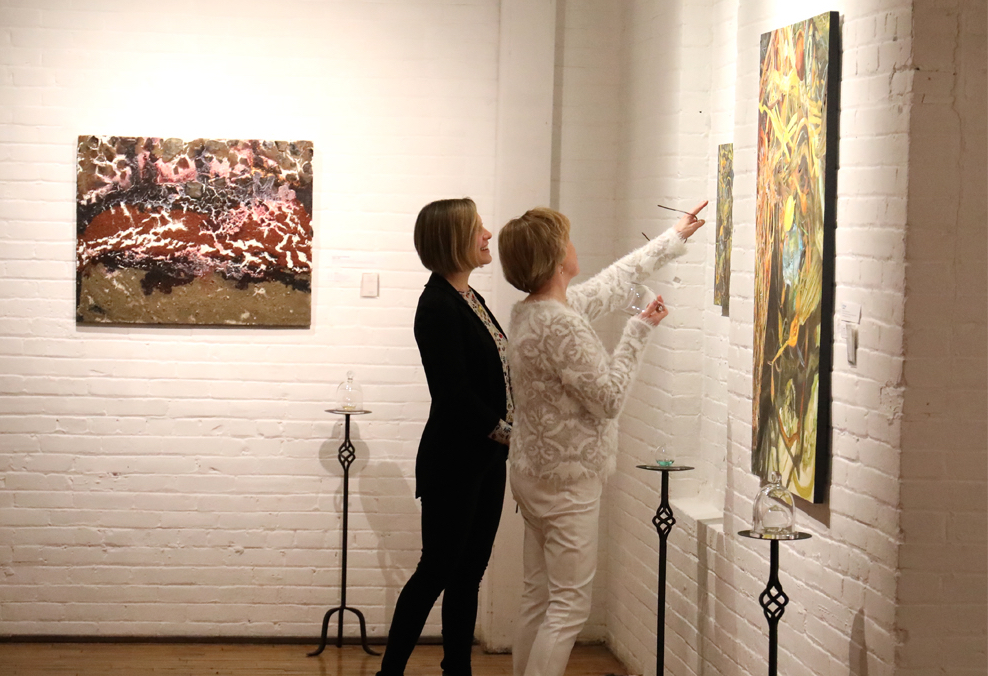
How is Indigo Perfumery doing?
Last year was our best year. I’m pleased with where it’s at. When you start out, you’re not sure how long you are going to last. I didn’t have any backing. I did it by myself, and that’s challenging. People have asked me to open a store in Columbus and other cities. I’ve decided not to do that. I’m just going to stay here and keep plugging away.
What goals do you have for Indigo Perfumery going forward?
To continue to get our name out there and, obviously, to improve sales. I would like to have Indigo participate in art exhibitions, which we have done in the past. They are a really good way to teach people about the sense of smell and how important it is. Cleveland is having a triennial contemporary art exhibit this upcoming July called Front, and we are working on an entry for it now. I want to become involved in that way, let people know about us and make it fun.
What do you say to people who might be skeptical about whether there’s a market for niche fragrances in Cleveland?
Absolutely, there’s a market. It’s not as well-known, so that’s why I have more teaching to do, but many people wear niche fragrances. Sometimes, they’ll walk into the store and say, “Oh my God, I didn’t know Indigo was here, but I’ve been ordering the lines you carry.”

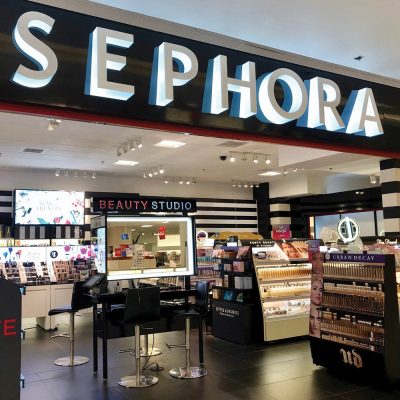
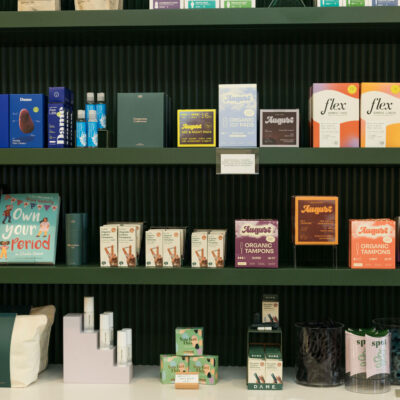
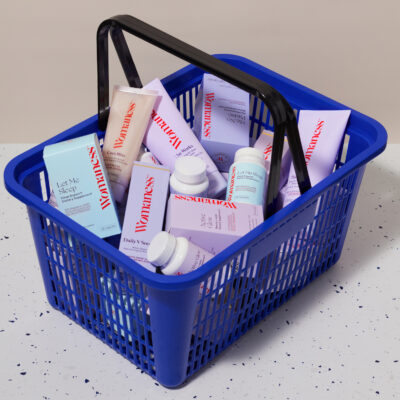

First, what exactly to you mean, specifically, by “the Midwest,” and why would people who live there have less experience with niche fragrances than people on “the coast?”
My first two fragrances, at age 17, were Annick Goutal Eau de Charlotte and L’Artisan Parfumeur Premier Figuier, and they were purchased for me by my mother at an upscale department store in Kansas City, Missouri. In college (in Columbia, Missouri and Evanston, Illinois, on Chicago’s north shore), I had several friends who owned a few bottles of niche fragrances.
Fast forward about ten years and I move to Washington, DC, where I’ve now lived for fifteen years, working as a librarian at a world-famous museum. So far I haven’t met a single person in this area familiar with niche fragrances. Please, think before you stereotype and paint everyone in a large, diverse, incredibly underrated part of the US (which is not even uniformly defined!) with the same bigoted brush stroke. (Are you Australian, by any chance?)